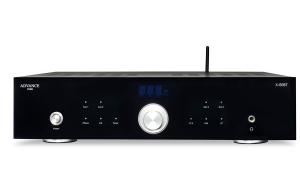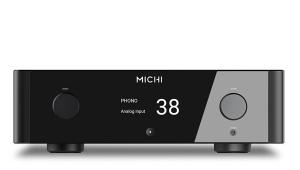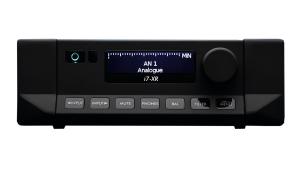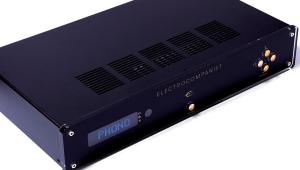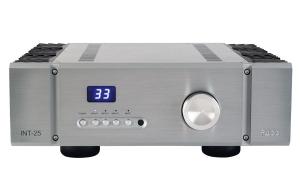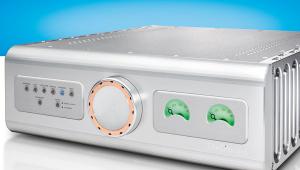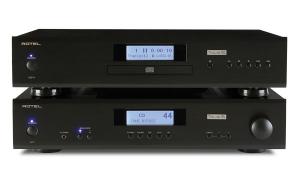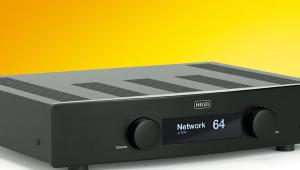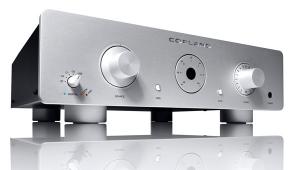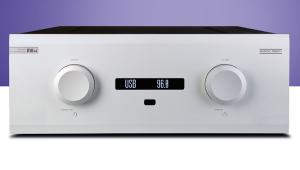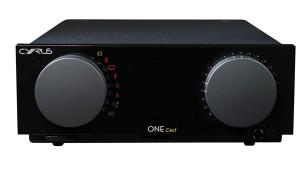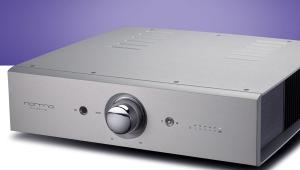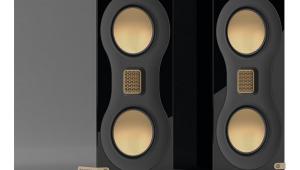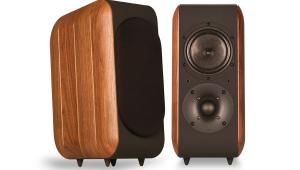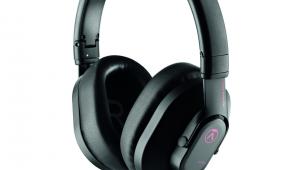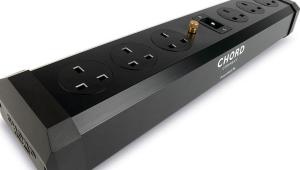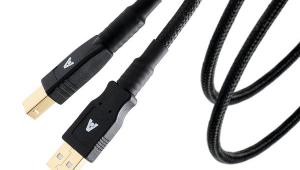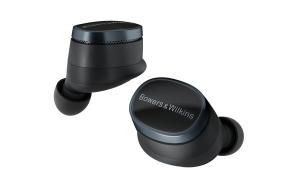Arcam SA20
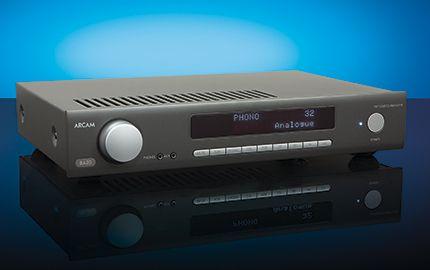
 Arcam has been a British success story ever since it first burst onto the hi-fi scene in the late seventies. From my point of view it has always been a reliable go-to, with products that never fail to perform admirably. The SA20 is one of three units that mark the arrival of the new HDA range. This is the first selection of two-channel components announced since the acquisition of the company in 2017 by Harman International. As always when such an event occurs, a certain amount of uncertainty over the future of the name ensues, but the new lineup underlines the firm commitment that both Arcam and its new owners have to the resurgence in two-channel audio. Even more interesting is that the second model in the HDA lineup is a lower-cost amplifier, the £699 Class A/B SA10, while the third is the CDS50 CD player. Yes, that’s right – a CD player. OK, it has the requisite network player and streaming facilities, but the fact remains it’s also a high-quality CD and SACD player. You know – one of those things we were all assured would be dying out any day now!
Arcam has been a British success story ever since it first burst onto the hi-fi scene in the late seventies. From my point of view it has always been a reliable go-to, with products that never fail to perform admirably. The SA20 is one of three units that mark the arrival of the new HDA range. This is the first selection of two-channel components announced since the acquisition of the company in 2017 by Harman International. As always when such an event occurs, a certain amount of uncertainty over the future of the name ensues, but the new lineup underlines the firm commitment that both Arcam and its new owners have to the resurgence in two-channel audio. Even more interesting is that the second model in the HDA lineup is a lower-cost amplifier, the £699 Class A/B SA10, while the third is the CDS50 CD player. Yes, that’s right – a CD player. OK, it has the requisite network player and streaming facilities, but the fact remains it’s also a high-quality CD and SACD player. You know – one of those things we were all assured would be dying out any day now!
The SA20, however, is somewhat more unusual, despite being essentially an 80W-per-channel integrated amplifier. The headline is its use of a Class G topology in its output stage, which is a rather clever method that builds on basic Class A technology. The result is more power when required, but without the concomitant downside of unwanted heat when things are playing more quietly. More details can be found in the In Sight boxout overleaf but, briefly, the amplifier has two power rails for its output stage – one for normal, low-level listening and a second that is brought into play when more volume is demanded. Essentially, you can think of it as being a bit like a turbocharger on a car engine, albeit without the bangs and flames from the rear when the demand drops off once more...
The HDA series also marks the arrival of a slight re-style for the company’s products. The Arcam DNA is still there, but the units are sleeker, more stylish and definitely more feature packed than before. A comprehensive control menu structure is accessible through both the remote control handset and the front panel, giving more options than might be first expected. In the case of the SA20, this provides access to five digital filter options, display dimming settings, an A/V pass-through setting for any of the inputs, a standby timeout and the option to choose whether the insertion of a headphone plug automatically mutes the speakers or not.
Overall, the SA20 is neatly laid out and easy to operate. Three digital inputs are available – one optical and two coaxial – plus three line inputs and an MM phono stage. Other socketry at the rear includes RS232 and Ethernet connections to link the unit to a home automation network, for which a more than comprehensive programming guide document is available on the Arcam website. In addition, the supplied remote control handset can be programmed to operate other equipment from additional manufacturers and, again, instructions and a range of pre-programmed codes for common partnering items is available.
A USB socket can also be found on the rear panel, but this is for software upgrades only and is not a dedicated input as such. Those wishing to connect a personal audio player will need to do so via the front panel AUX input, which is a standard 3.5mm stereo jack socket. Beside this, an additional 3.5mm socket provides connection for headphones.
For auditioning, I set the SA20 up with my regular PMC twenty.24 loudspeakers and driven by a Naim CD5 XS/Flatcap XS CD player into the CD input, plus a Michell Gyro SE turntable with SME 309 arm and Ortofon 2M Black cartridge (HFC 434) into the MM phono input.
Sound quality
I generally find Arcam products to have something of a house sound and I am pleased to note that the SA20 has continued this tradition, as it is very much a good thing. There is nothing about its performance that will ‘frighten the horses’ and yet it never sounds especially drab or soporific. The SA20 strikes a very well-judged balance between pulling you into the music with its fine level of detail, but never throwing absolutely everything at you in a bit of a jumble. It is generally composed, yet ebullient.
The first thing that strikes me about it, and which is something that takes me back to a more recent Arcam favourite in the form of the FMJ A28 (HFC 311), is the delightful midrange performance. The SA20 has a remarkable sense of image depth and is able to deftly paint surprisingly expansive sonic pictures between the loudspeakers.
As a result, the Arcam really helps to bring music alive before your ears in a way that belies its price tag. Vocalists, in particular, stand firmly centre stage, locked into pin-sharp focus and with just the right amount of fine detail that makes intakes of breath easy to pick out, but not distracting. Donnie Munro’s magnificent version of Runrig’s Always The Winner, recorded live at the Royal Albert Hall and accompanied by just a piano, is a true hairs-on-the-back-of-the-neck moment through the SA20. Furthermore, the sense of scale of the location is surprisingly easy to discern.
The delightful midrange is aided in its endeavours by a sweet and open treble performance. Top-end detail is most impressive and the SA20 does a fine job of pulling the subtleties that are buried in the back of recordings neatly to the fore. The caveat here is that this sense of poise and clarity is only guaranteed at normal volume and slightly above, but once you start to push things further, there is a tendency to harden up. At a standard listening level the explosive cymbal strike in the middle of Jeff Buckley’s So Real is impressively dynamic, but turn the wick up further and it turns into a rather splashy crash.
At the low end, the SA20 sets off to a fine start by serving up a main course of deep, firm bass with a pleasing side order of additional detail. Simpler synthesiser bass lines bound along enthusiastically while double basses have a delightful roundness to their notes. In addition, Ian Maidman’s fretless bass line on David Sylvian’s Taking The Veil comes across in all its sinuous, fluid glory and propels the track along perfectly.
The only time this impressive performance starts to show a few cracks is, again, when the SA20 is pushed harder. When elevated to neighbour-annoying volume levels, the thumping bass line from Underworld’s Jumbo sees the Arcam starting to sound a little uncertain for the first time. The bass notes are certainly solid and weighty, but the SA20 seems to be struggling ever so slightly to keep up with their pace, making the underlying tempo of the track a little less tight than usual. Bringing the volume back down a touch restores order, but it seems a shame not to be able to pound something like this out noisily.
Conclusion
The SA20 marks a fine return to the forefront of well-priced two-channel reproduction for Arcam. It is well constructed, neat and blessed with a good range of inputs and functions. As long as it is not pushed too hard, it has a sound that is typically Arcam in the very best sense and makes a convincing case for itself at the price.
DETAILS
Product: Arcam SA20
Price: £999
Origin: UK/China
Type: Integrated amplifier
Weight: 9.2kg
Dimensions: (WxHxD) 433 x 87 x 323mm
FEATURES
● Quoted power output: 2x 80W (8ohm)
● Inputs: MM phono; 3x RCA line-level; 1x optical digital; 2x coaxial digital
Distributor: Arcam UK
Telephone: 01223 203200
Website: arcam.co.uk
Read the full reviww in August issue 439
 |
Inside this month's issue:
Ruark R610 music system and Sabre-R standmount speakers, PMC twenty.23i Active, floorstanders, English Acoustics Downton preamplifier, Bluesound NODE ICON preamp/streamer, Ortofon Concorde Music Blue MM cartridge and much, much more
|

